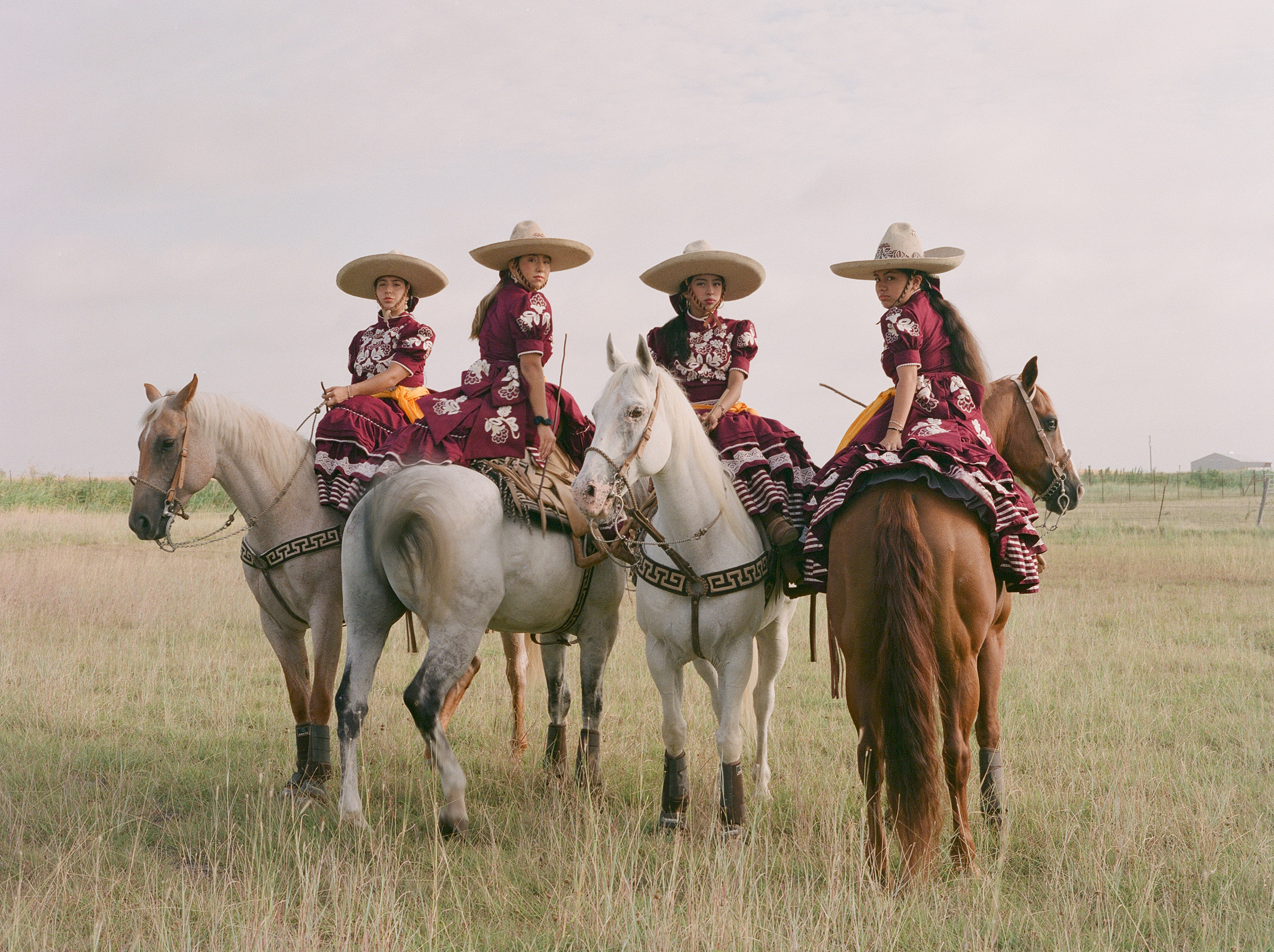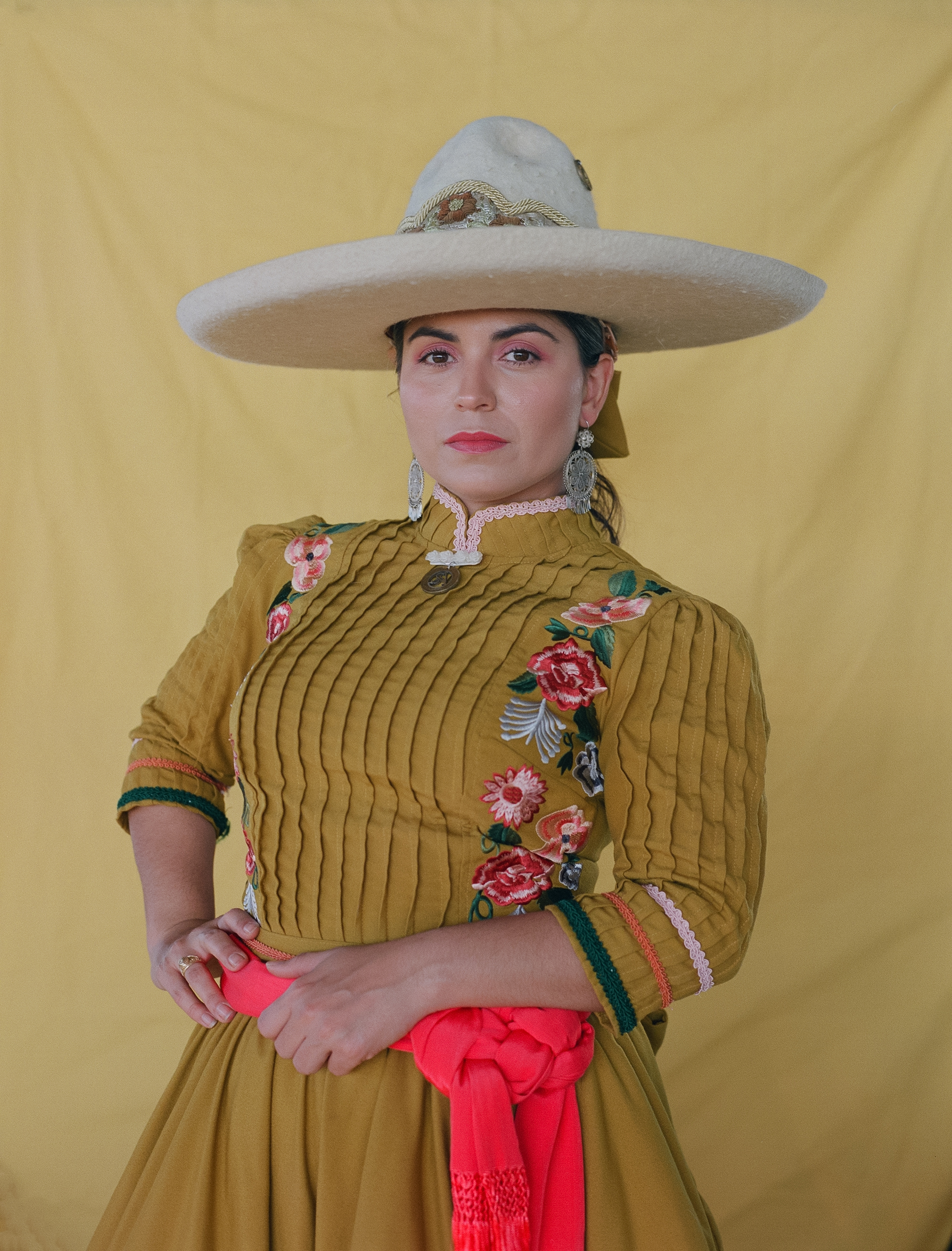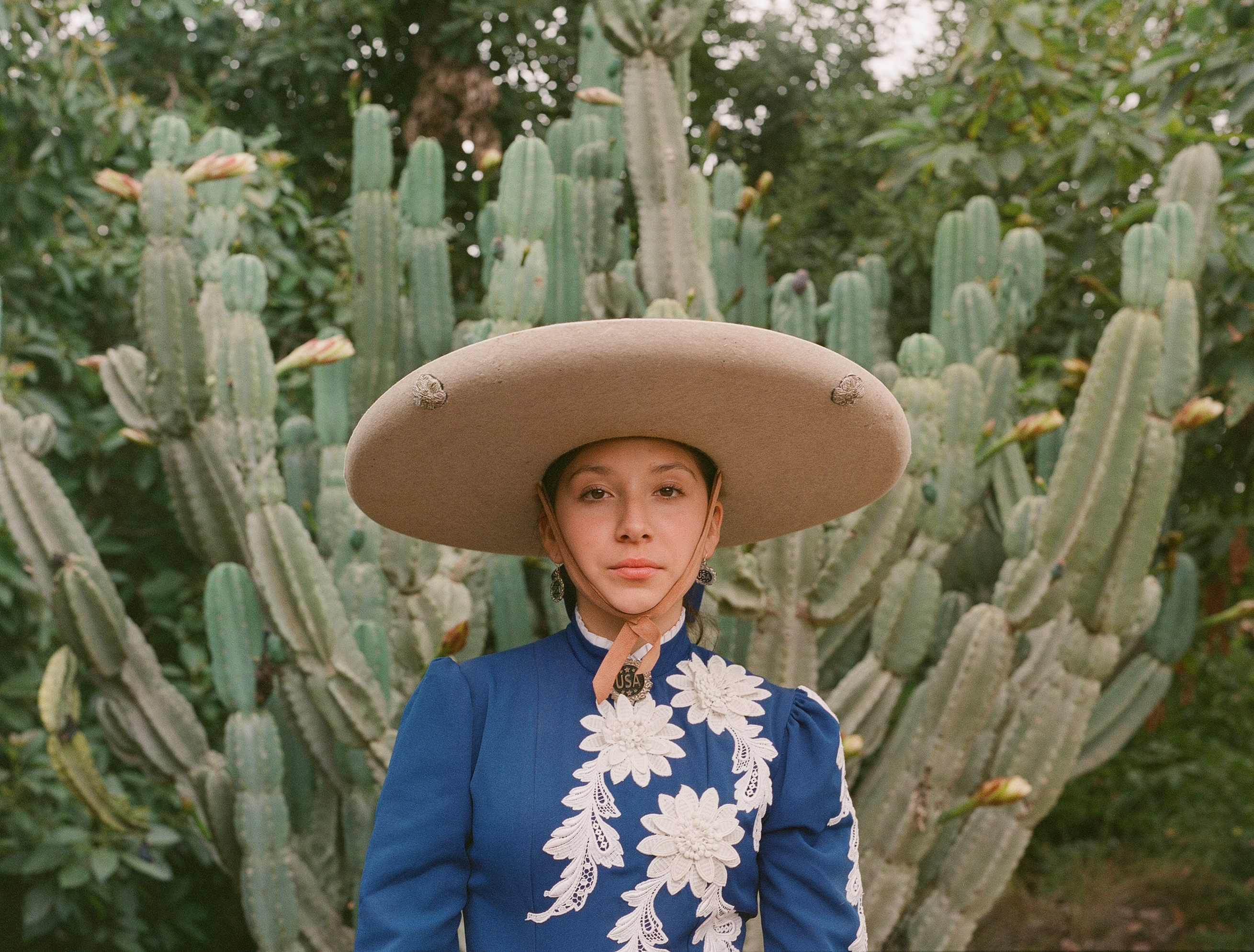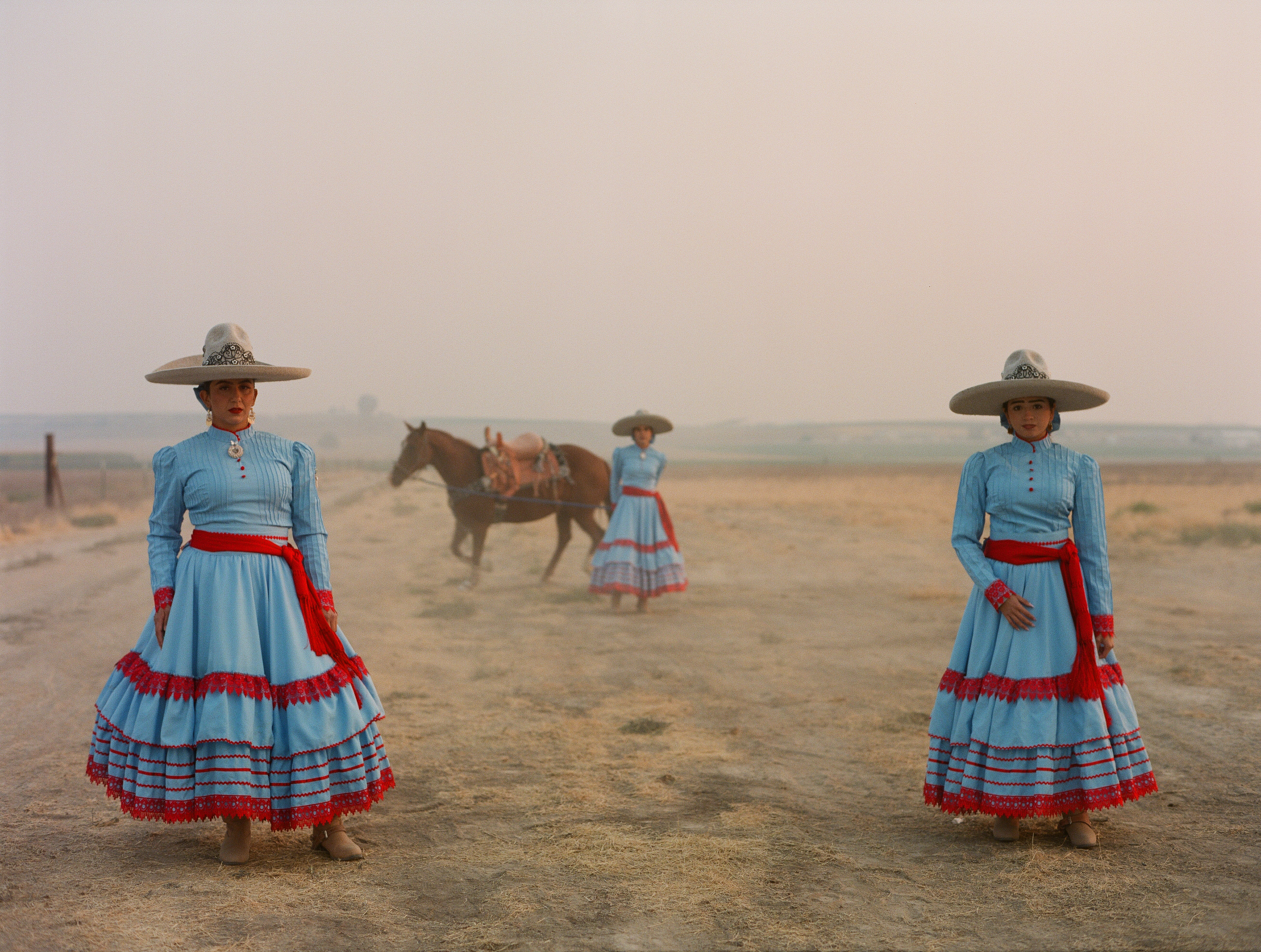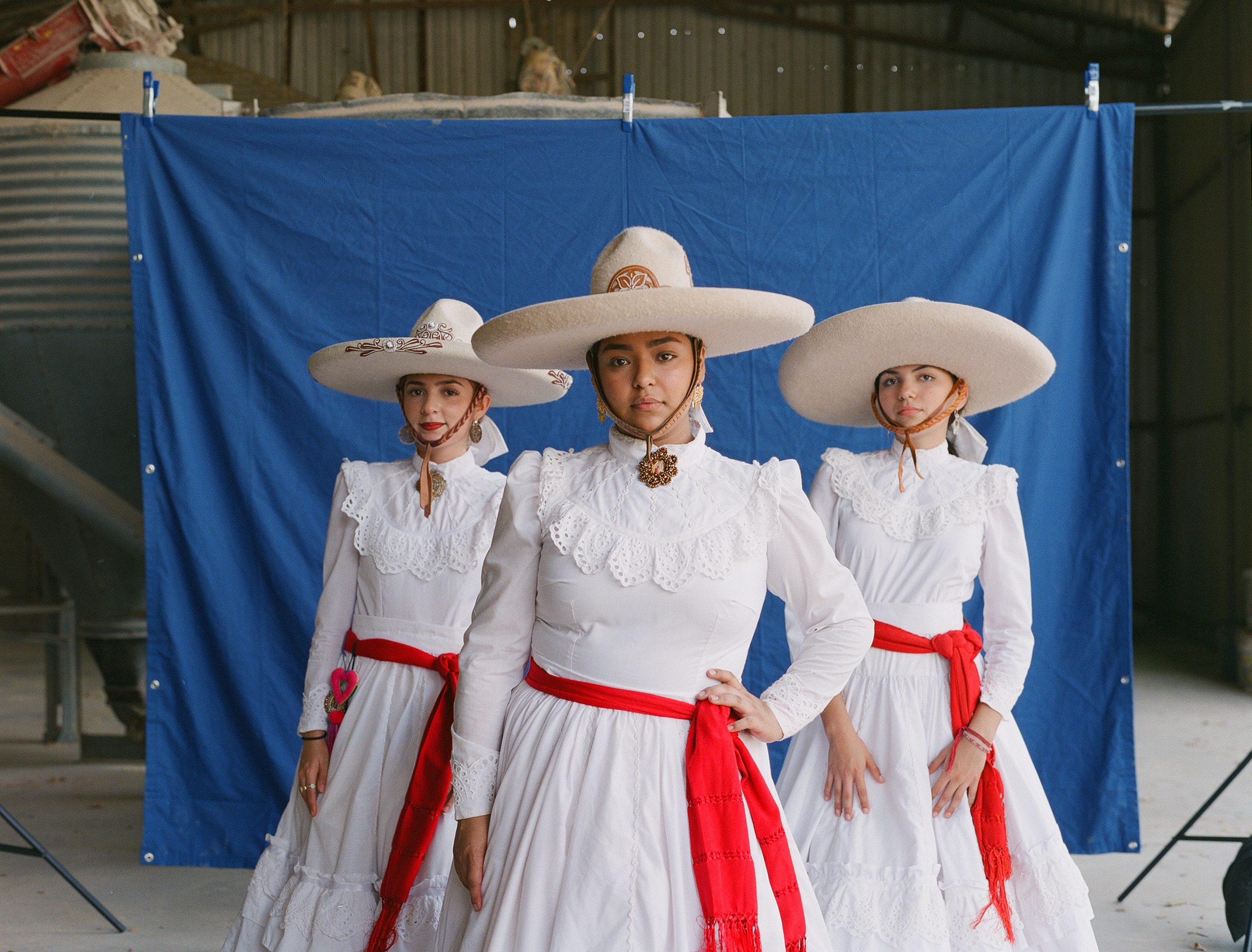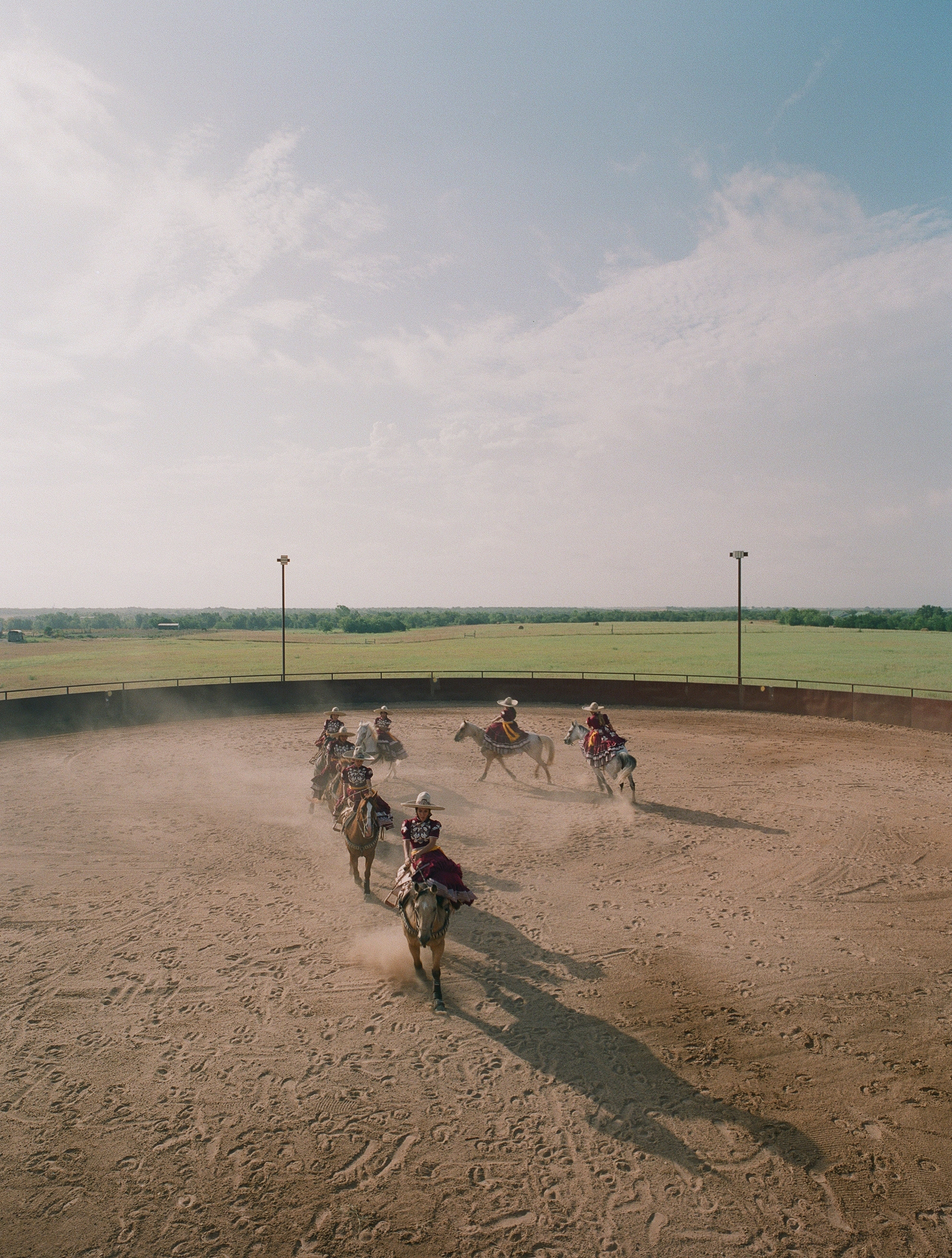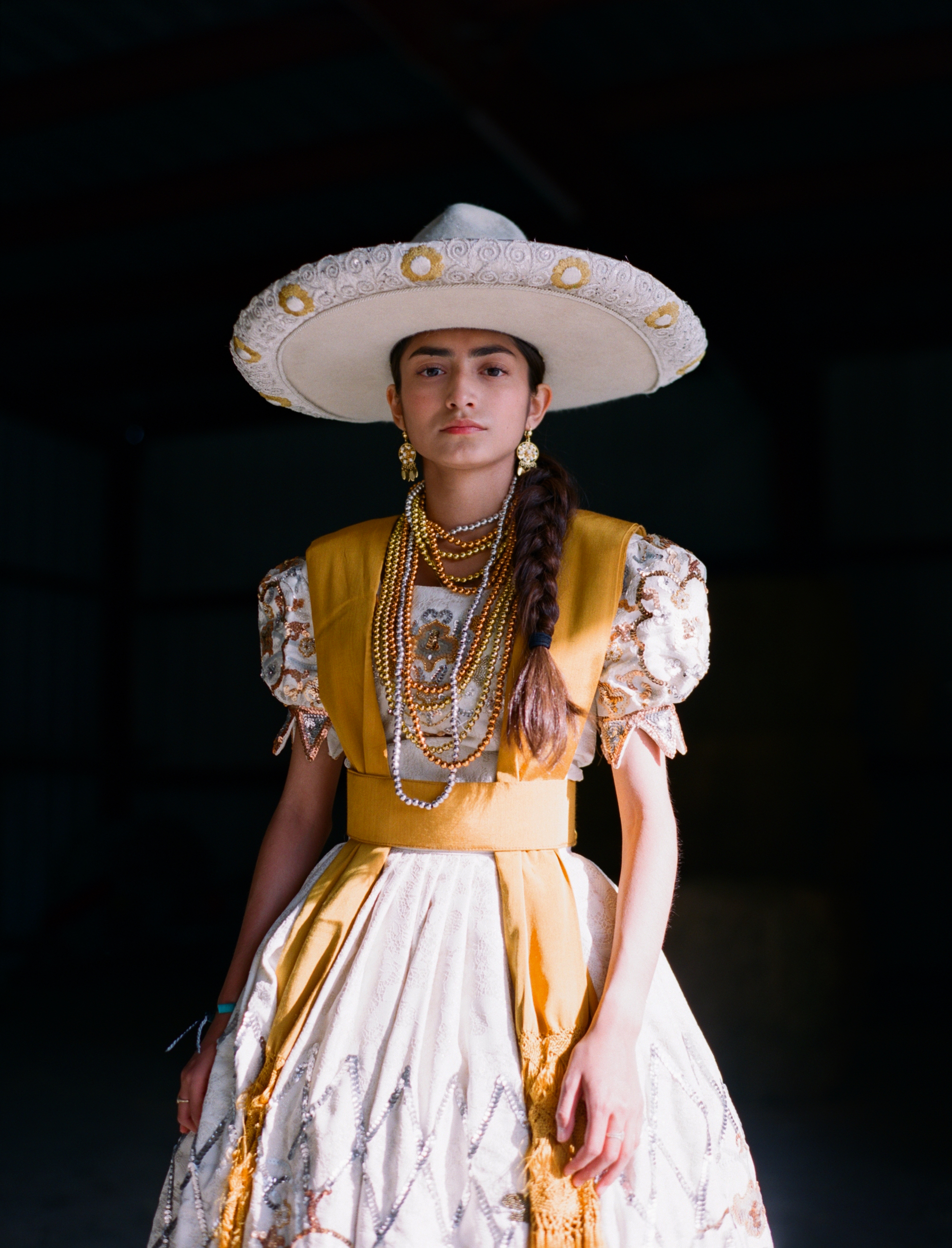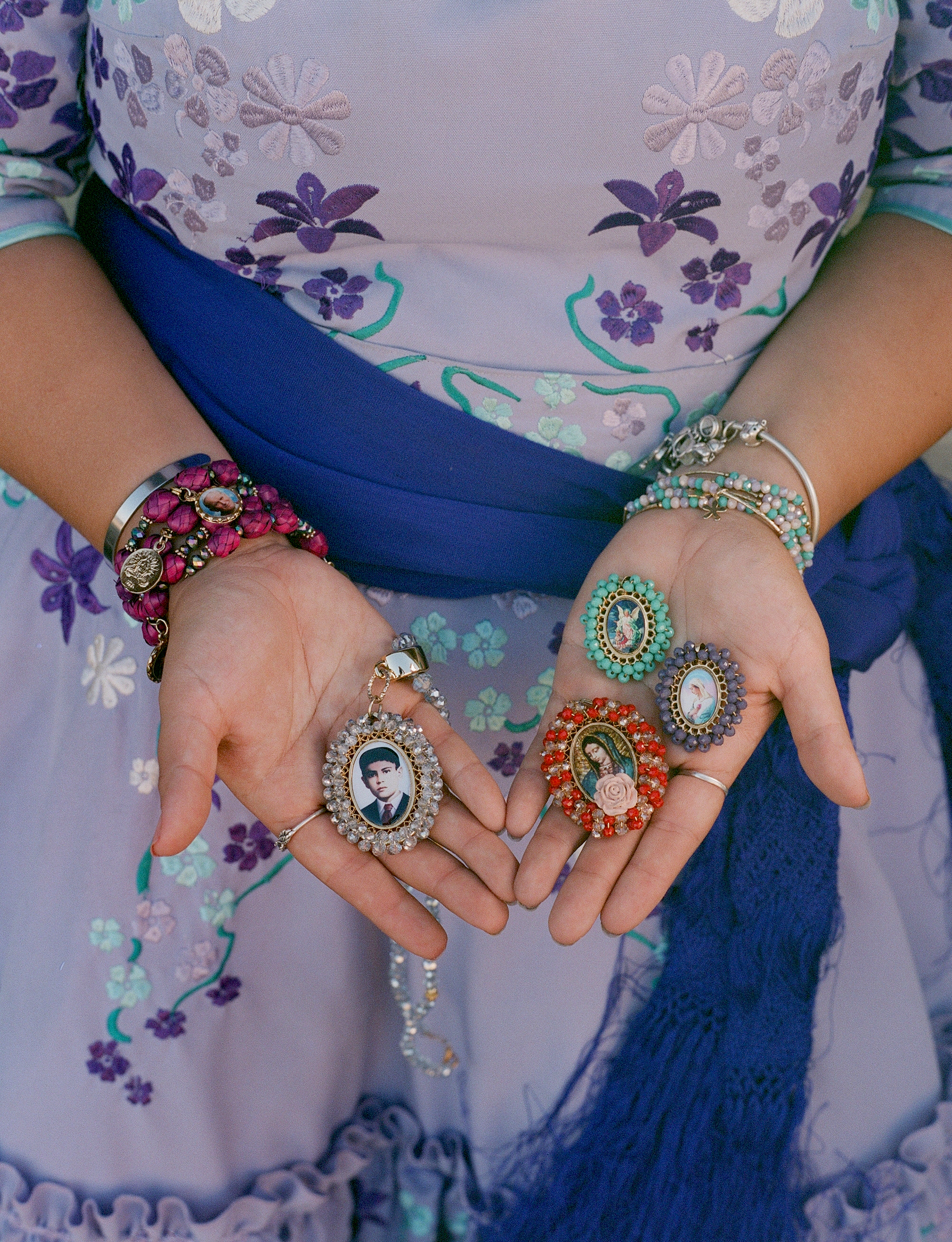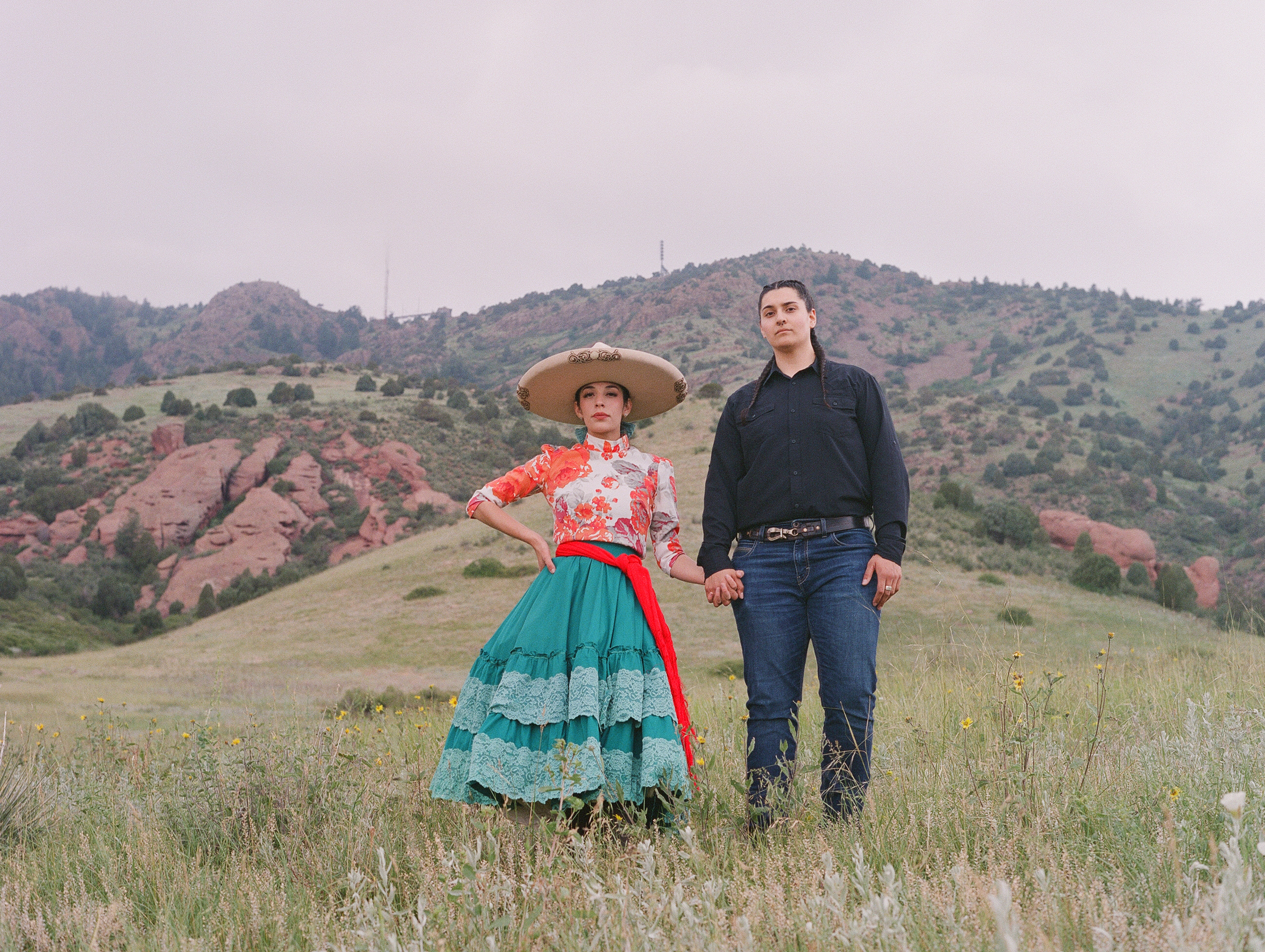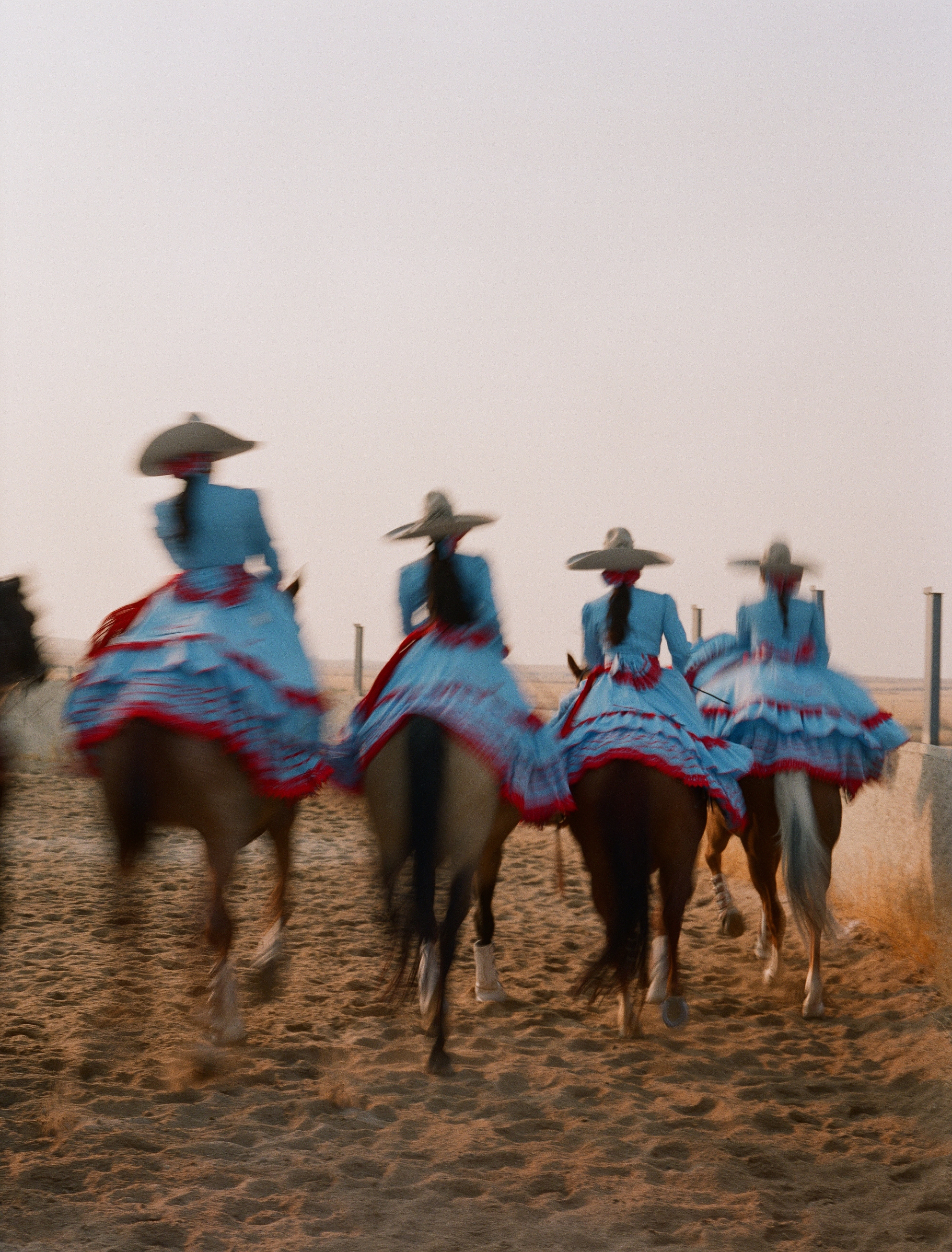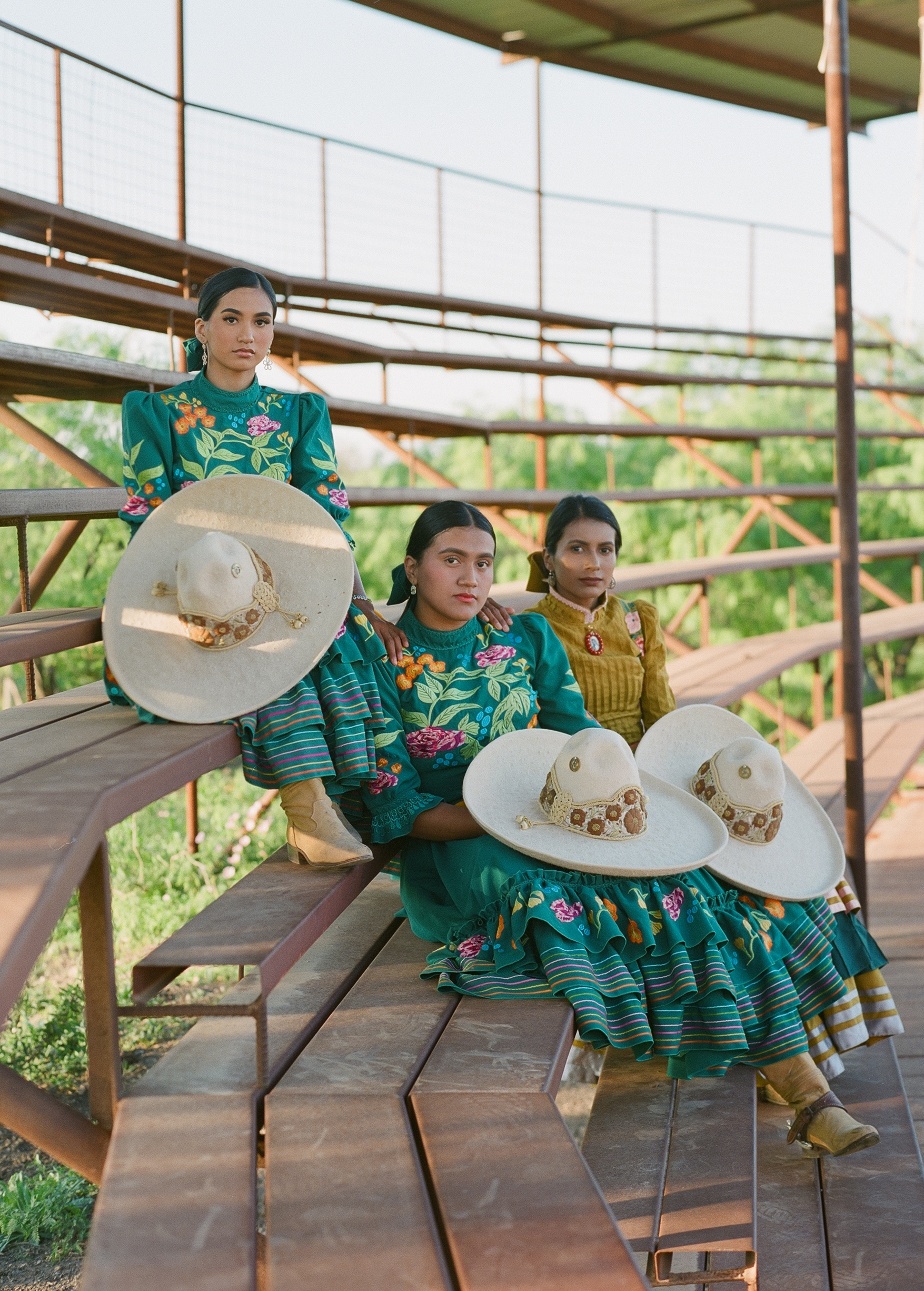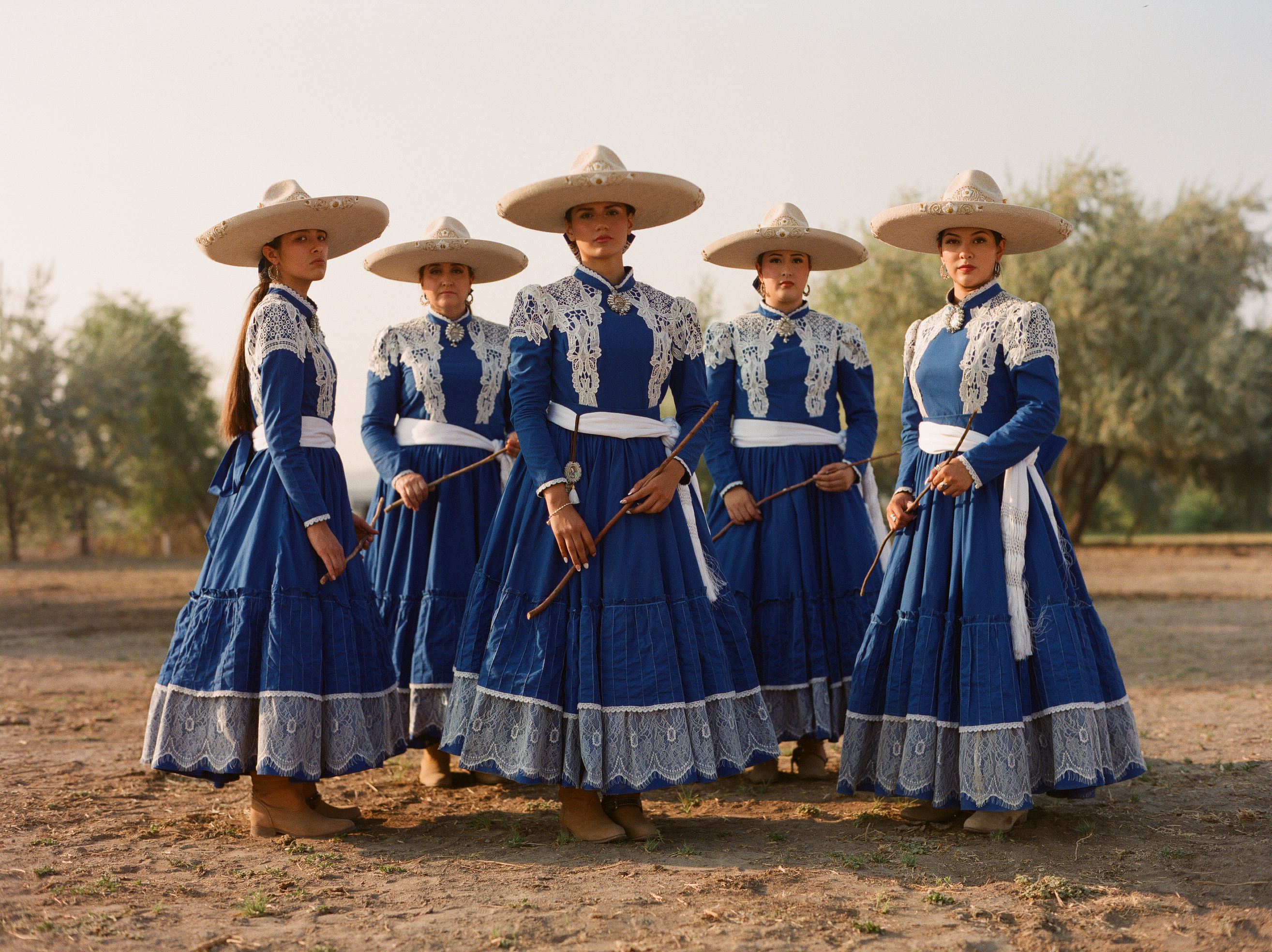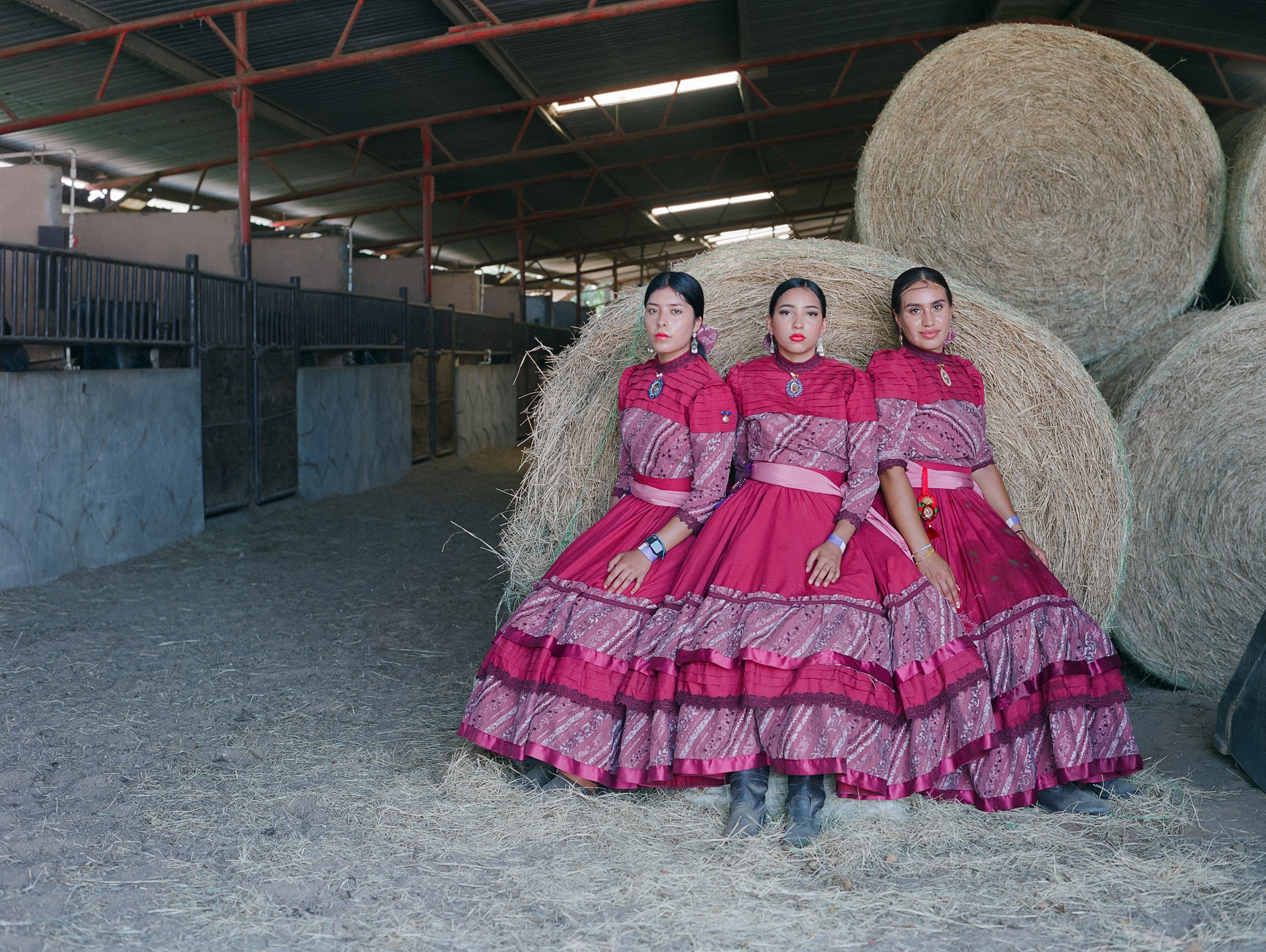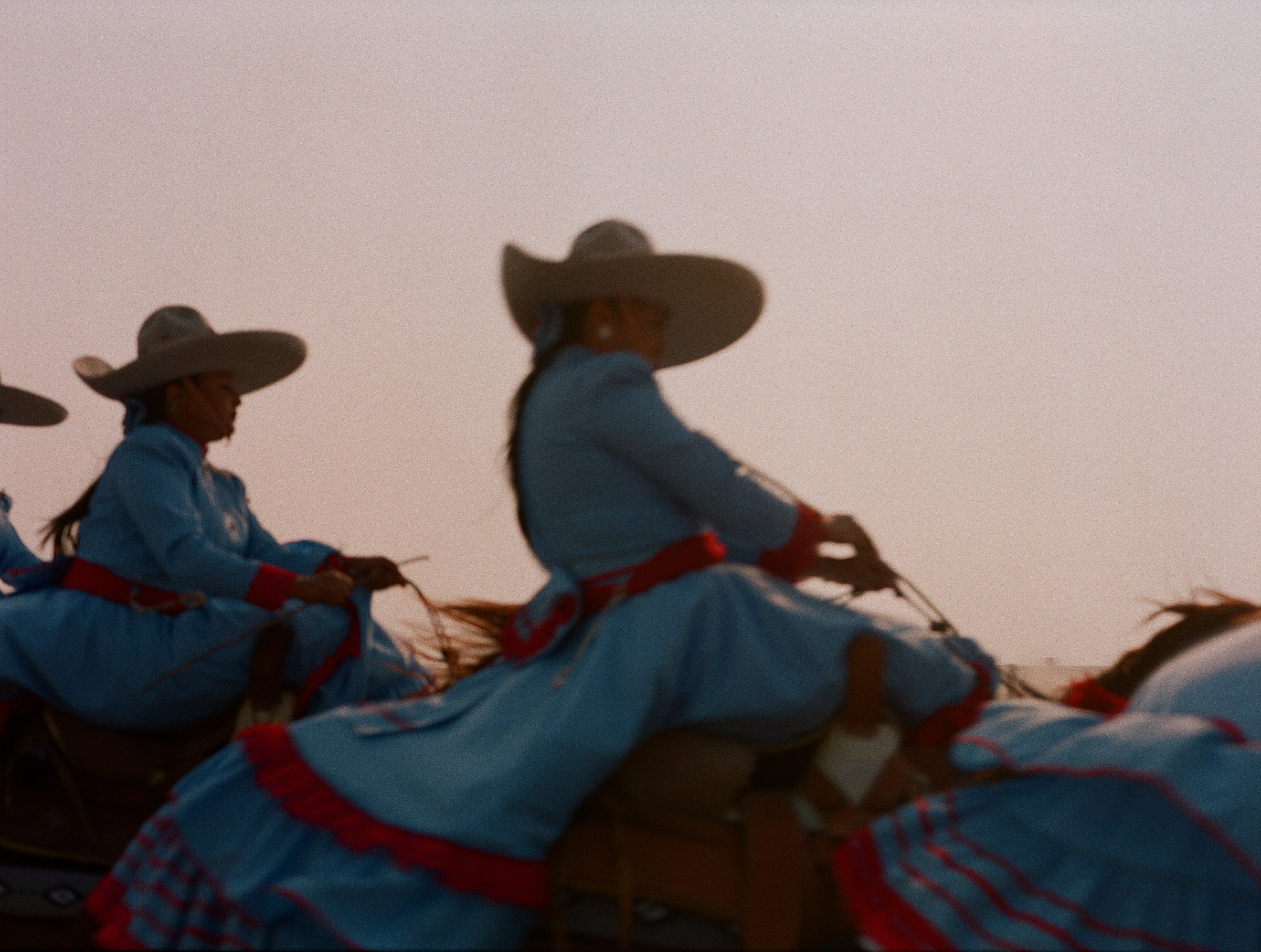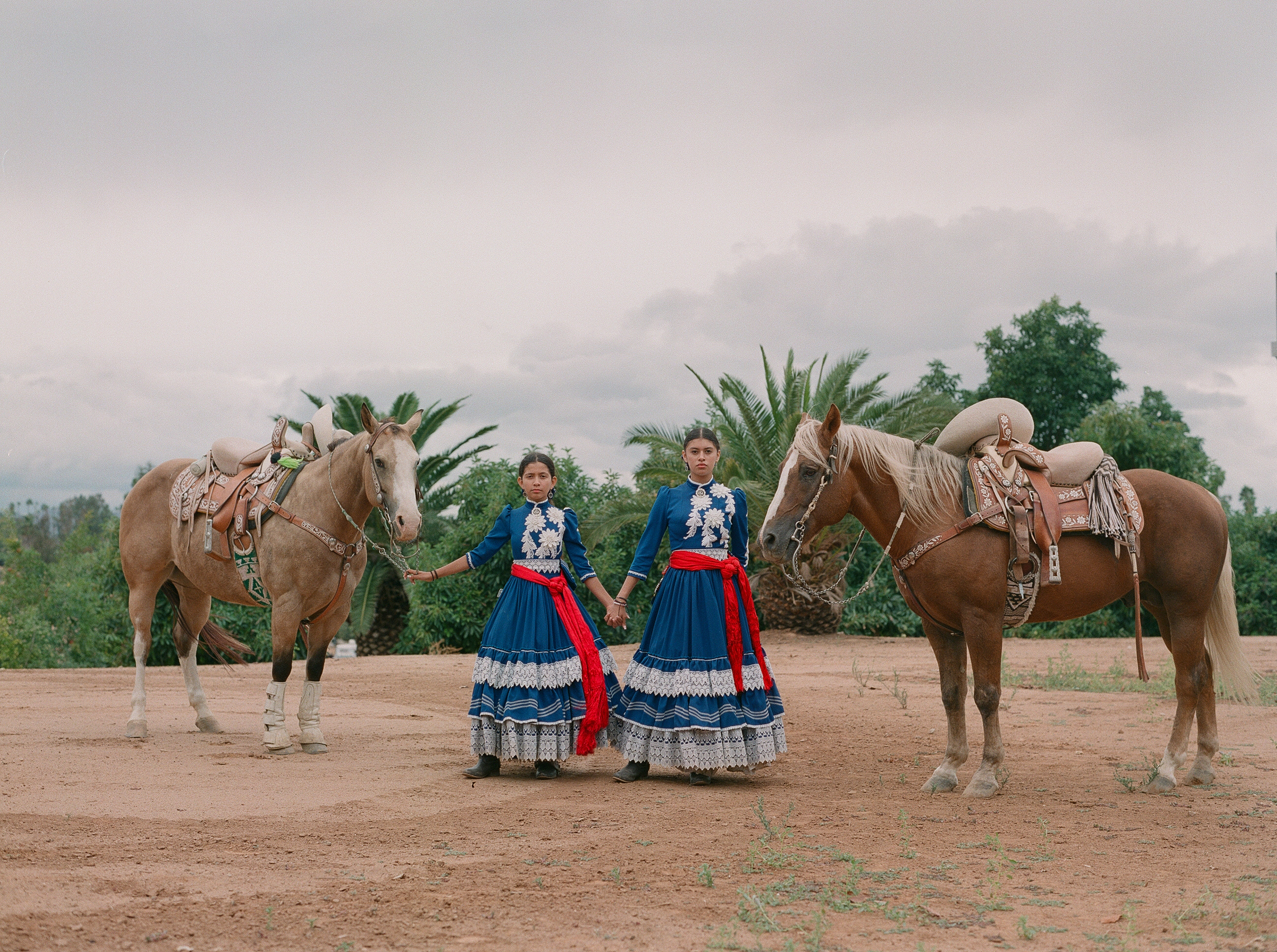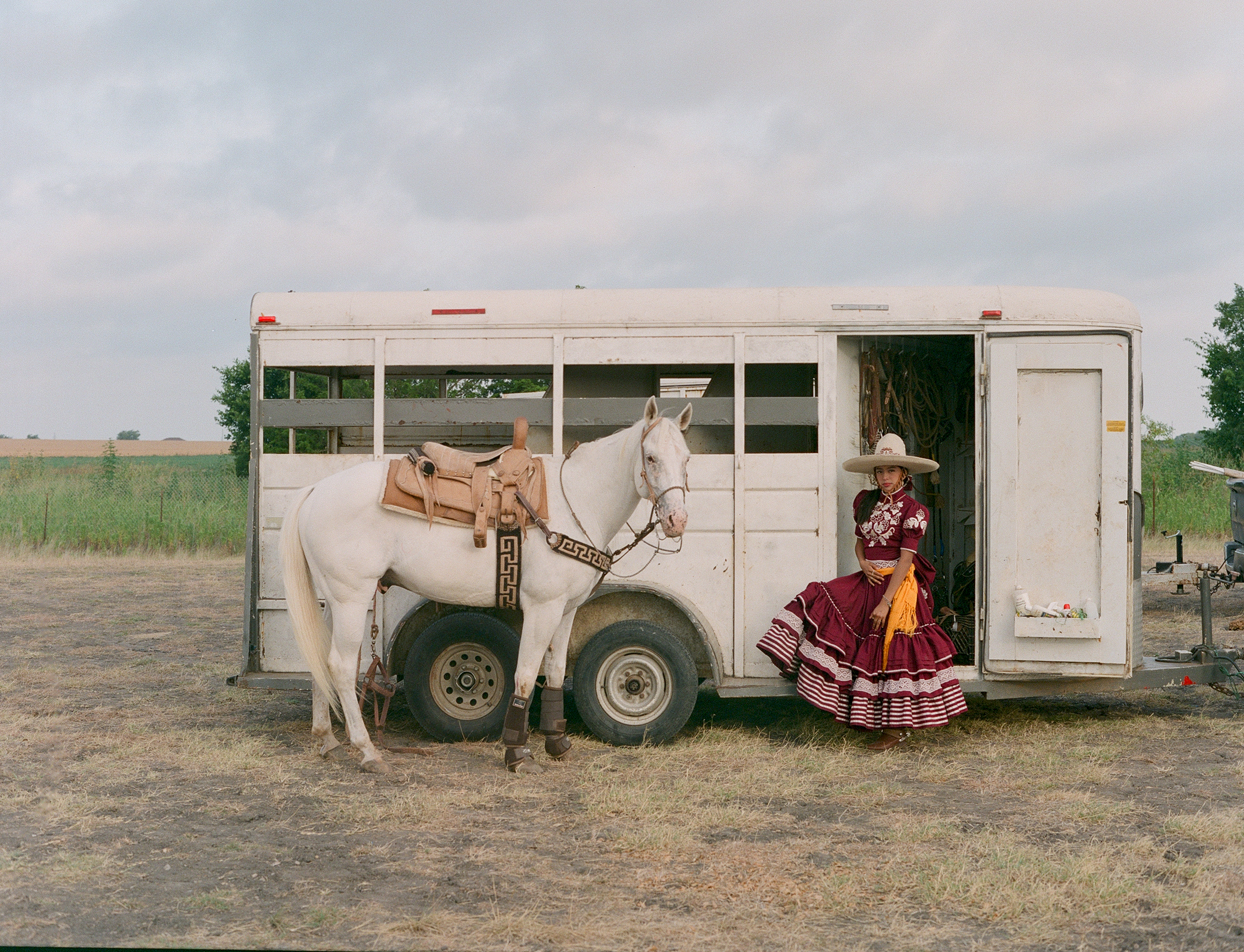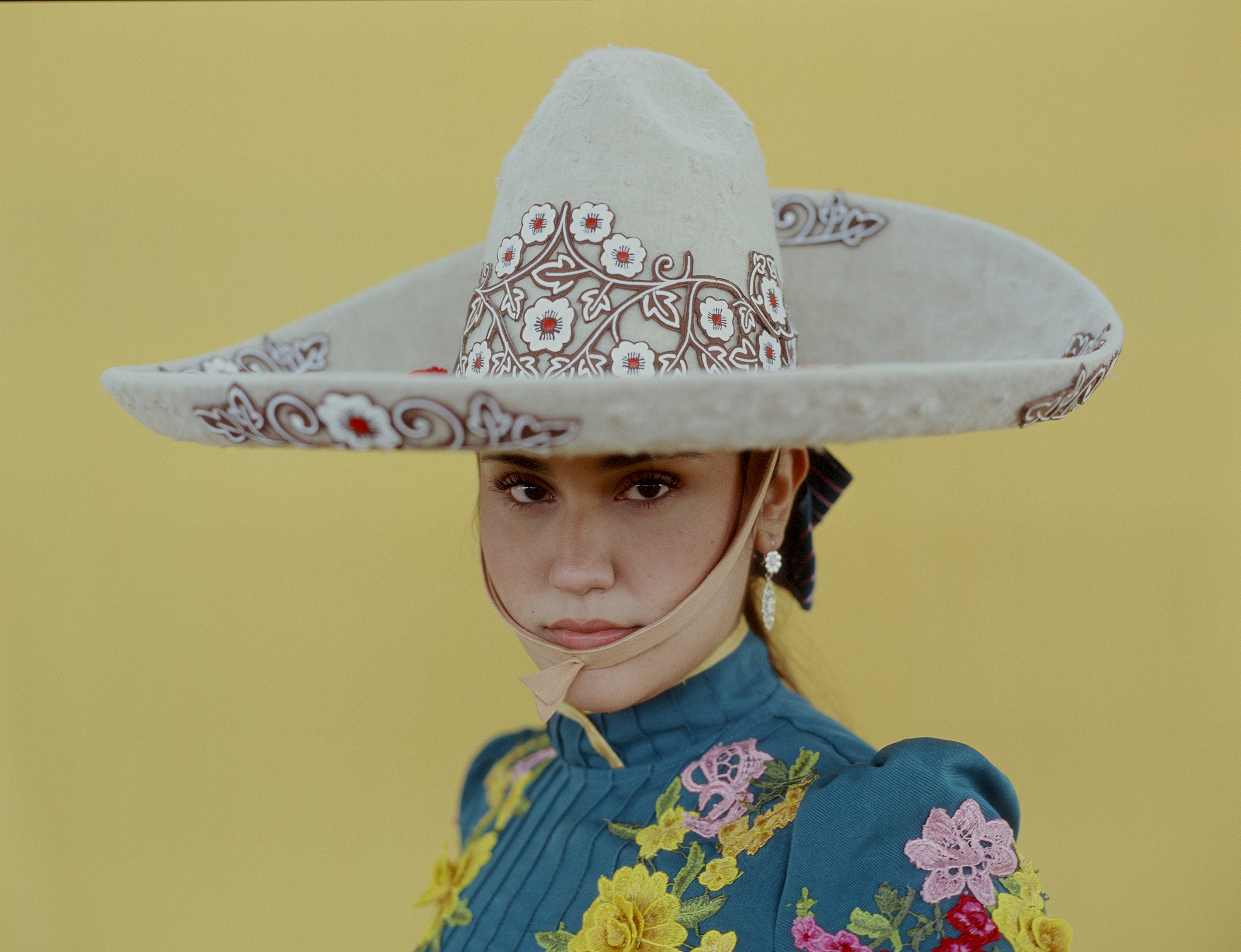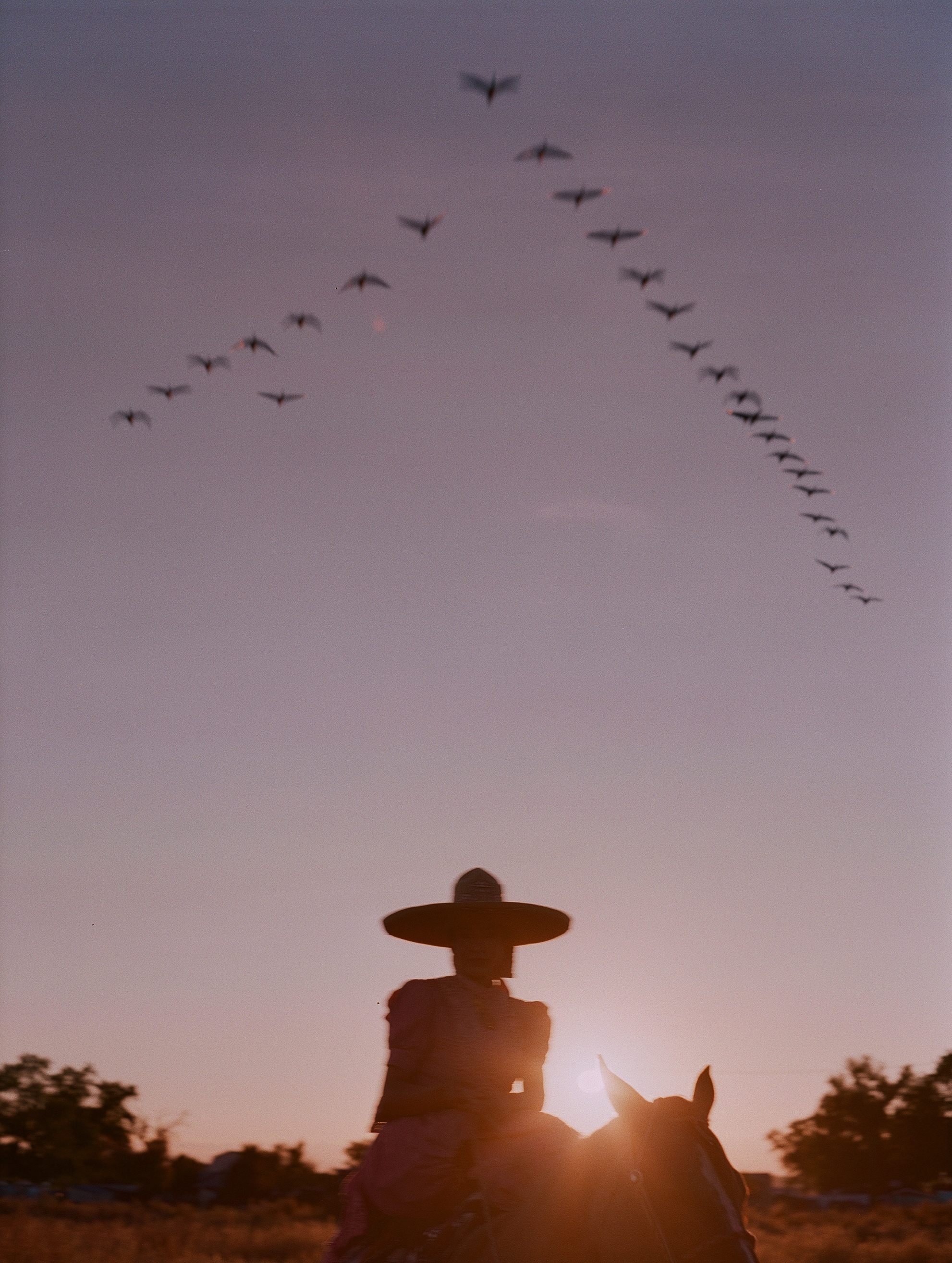Constance Jaeggi: Escaramuza, the Poetics of Home
Lenscratch recently held its annual(-ish) call-for-projects, and the response was impressive. In total, there were over 500 submissions. We are eager to look through each of these entries and share some highlights over the months to come. Today I am in conversation with Constance Jaeggi about her collaborative project Escaramuza, the Poetics of Home.
Constance Jaeggi is a Swiss photographic artist based in Fort Worth, TX. Jaeggi moved to Texas from her native Switzerland in 2009 to pursue her degree from TCU and begin her competitive cutting horse-riding career. Jaeggi has studied at the New York Film Academy and most recently completed a Master of Art History and Art World Practice at Christie’s in London. Jaeggi’s work focuses on the relationship between horse and human, in particular women. She uses horses as a backdrop for exploring themes of intimacy and identity, connection, and power dynamics. Her work has been internationally exhibited and published. She has had two solo shows at the National Cowgirl Museum in Fort Worth, TX and has been exhibited internationally in Rome and Venice, Italy and Zurich, Switzerland. Her work has been published notably by National Geographic, The Guardian and The Washington Post. Her most recent project, Escaramuza, the Poetics of Home is a 2024 Lensculture Critics’ Choice Awards winner and will be shown at Photo London in May 2025. Constance is also a member of Women Photograph.
ire’ne lara silva, the 2023 Texas State Poet Laureate, is the author of five poetry collections, furia, Blood Sugar Canto, CUICACALLI/House of Song, FirstPoems, and the eater of flowers, two chapbooks, Enduring Azucares and Hibiscus Tacos, a comic book, VENDAVAL, and a short story collection, flesh to bone, which won the Premio Aztlán. ire’ne is the recipient of a 2021 Tasajillo Writers Grant, a 2017 NALAC Fund for the Arts Grant, the final Alfredo Cisneros del Moral Award, and was the Fiction Finalist for AROHO’s 2013 Gift of Freedom Award. Most recently, ire’ne was awarded the 2021 Texas Institute of Letters Shrake Award for Best Short Nonfiction. ire’ne is currently a Writer at Large for Texas Highways Magazine and is working on a second collection of short stories titled, the light of your body.
Angelina Sáenz is an award-winning educator and poet. She is a UCLA Writing Project fellow, an alumna of the VONA/Voices Workshop for Writers of Color and a Macondo Writer’s Workshop Fellow. Her poetry has appeared in venues such as Diálogo, Split this Rock, Out of Anonymity, Angels Flight Literary West, Every Other, Cockpit Revue Paris and The Acentos Review. Her debut book of poetry, Edgecliff, was released in December of 2021 with FlowerSong Press. Her second collection, Maestra, is forthcoming in December 2023 with Flowersong Press.
Instagram: @constancejaeggi
Escaramuza, the Poetics of Home
Escaramuza is the sport of all-female precision horse riding teams that execute meticulous maneuvers while riding sidesaddle at high speed and wearing traditional Mexican attire. Through photographic portraiture, poetry, and in-depth interviews, Escaramuza, the Poetics of Home considers how the escaramuza tradition persists in the present-day United States, what it means for the identity of its Mexican and Mexican-American female practitioners, and how it fosters a profound sense of belonging. This work explores the roles of family, immigration, and gender dynamics within escaramuza and Charrería culture in the US, drawing historical parallels to the soldaderas who fought in the Mexican Revolution and are the inspiration for the creation of the escaramuza tradition.
Escaramuza, the Poetics of Home will debut at the National Cowgirl Museum in Fort Worth, TX, in March 2024, as one half of a larger exhibition on the escaramuza tradition. Installed in the museum’s second gallery, the show comprises thirty photographs, as well as mixed media works, by the award-winning photographer Constance Jaeggi, together with the ekphrastic poetry of 2023 Texas Poet Laureate Ire’ne Lara Silva, and Angelina Sáenz, award-winning educator, poet, and writing project fellow at UCLA. The poets’ collaboration with Jaeggi contextualizes themes of identity, family, and gender within the escaramuza community, while the collaborative endeavor as a whole delves deeply into the rich Mexican tradition of escaramuza, examining the intricate threads that bind this tradition with the identities of its dedicated female practitioners throughout the US. The exhibition will be accompanied by a fully illustrated catalog.
Daniel George: What brought the escaramuza tradition to your attention, and what about it motivated you to begin this series?
Constance Jaeggi: I was asked to make a photographic series for an upcoming exhibition on the escaramuza tradition at the Cowgirl Museum, in Fort Worth, TX. As someone who is interested in the relationship between women and horses, I was drawn to the idea of all-female precision riding teams. As I started researching, I found further underlying narratives that really resonated with me and that felt important to acknowledge.
Escaramuza is part of the Charreria tradition, which has historically been male-dominated. Charreria originated from the cattle ranching traditions of early Mexico and evolved into a refined, formalized practice in the post-revolutionary period, becoming a symbol of Mexican identity, or lo mexicano. It shares many similarities with American rodeo, particularly in the variety of equestrian events it includes, but excluded women as riders until the 1950s when a new discipline was created called Escaramuza. Escaramuza featured all-female teams performing intricate maneuvers while riding sidesaddle at high speed, dressed in traditional Mexican dress. The attire and synchronized routines of escaramuza were inspired by the Soldaderas—the women who fought in the Mexican Revolution between 1910 and 1920.
Escaramuza is widespread across Mexico and is increasingly gaining popularity in the United States as Charrería continues to grow here. The visuals are an easy entry point into the sport as a viewer. The colorful, intricate dresses and the elegant, powerful performances, which resemble a ballet on horseback, immediately captivated me. But it was the stories of the women I encountered that truly moved me. Their commitment to the sport and their determination to preserve this tradition is inspiring. While Charrería in Mexico is often associated with the wealthy, many of the charrosand charras in the U.S. work hard to cover the costs of owning and competing with horses. A number of the women I met are full-time students, hold multiple jobs, or juggle work with raising children. The sport is also physically demanding and dangerous. The women ride sidesaddle in heavy, hand-embroidered dresses. Each team consists of eight riders who must perform synchronized patterns, weaving in and out of each other’s paths at high speeds. Riding sidesaddle is especially challenging, as it limits control to just one side of the horse. There is also a complex narrative around immigration that plays a role in the development of the sport in the U.S., as many riders expressed a sense of not fully belonging either in Mexico or in the U.S.—feeling “not Mexican enough” when traveling to Mexico, but “not American enough” at home.
Gender dynamics are another significant issue. Many women expressed frustration with their exclusion from voting within the Charrería governing bodies, and the strict dress codes they must follow, which are not applied to the men’s events. There are also striking parallels with the Soldaderas—the women who fought in the Mexican Revolution. Their contributions have often been overlooked or under-researched, and the way they have been remembered over time reflects this neglect. It became clear to me that this story is layered with rich history and complex social issues.
DG: I enjoy the collaborative nature of this project, and how you heighten the work through poetry and audio interviews. In your artist statement, you explain some of your motivations. Would you elaborate on why you believe it was important to include the words and insights of Ire’ne Lara Silva and Angelina Sàenz?
CJ: Collaboration felt right for this project. Given my position as an outsider to the culture and the tradition, it was important that the work was made in an empathetic and conscientious way, and I felt strongly that the escaramuzas’ voices needed to be very prominent in the work.
The beauty of the sport is easy to appreciate, but the work needed to go beyond aesthetic appreciation. Understanding the riders’ experience as women in a male-dominated sport, as Americans, as Mexicans, as immigrants and children of immigrants, as athletes, as horse women was essential, hence the interviews. This influenced how I chose to photograph them. These oral histories offered deep insights into the world these women navigate.
When it came to reincorporating the interviews back into the work, poetry seemed to be a great way to layer the narratives and help people engage with these women’s stories. Poetry was also a way to create a bridge between the soldaderas and the modern day escaramuzas. The contrast between the immediacy of photography and the reflective nature of poetry also intrigued me. Poetry is a slower, more contemplative medium that engages the audience in a different way. I was fortunate that Ire’ne and Angelina both agreed to work on this with me when I reached out. They are both highly accomplished poets and though neither of them had a background in Charreria, they each brought their unique experiences to the work as Mexican-American women from different parts of the country. Their style of writing differs from one another, and I think this just adds more depth to the work. Ire’ne wove in the history of the soldadera, and Angelina chose to focus more on the contemporary escaramuza’s voice. Ire’ne and Angelina expanded the project’s perspective, offering a deeper understanding of the human experience.
DG: The noble posture of these women has an arresting, enchanting quality—making me want to know more about them and their individual stories. Would you say that your interviews with the riders affected the work? How so?
CJ: The interviews were essential to the work and affected how I photographed the women I met. My conversations with them went deeper than just the sport. They shared everyday struggles and hopes, juggling multiple jobs, going to school, and raising children while making time for their own passions and self-fulfillment. They spoke about their connection to each other and the sisterhood that exists within their teams. The sense of pride they expressed in the carrying on and preservation of tradition, and in the representation of their culture struck me, as well as the frustration regarding the machismo they often must navigate within their sport. There was a certain resistance and desire for progress at times, but also a tremendous amount of respect for their culture. The formality in escaramuza, in the way they dress and a rigidity in the rules governing women’s attire was something that I wanted to honor. But I also wanted to convey their assertiveness, so the gaze was essential. These are women confronting the camera, owning their place in Charreria and in the American landscape.
DG: In I will die as a charra, I have been thinking about the lines…
You have to decide what is going to last
What will you pass on?
What will you hold onto forever?
…and how this relates to your images. You have decided what will last, or what we as viewers will see and what we will hold onto. I’m curious if you have thought about this—the sort of responsibility or accountability you have toward these individuals as you describe this culture. Would you mind sharing?
CJ: Absolutely. Susan Sonntag wrote that all photographs are memento mori, that to take a photograph is to participate in another person’s mortality, vulnerability, mutability. My hope is that through these extensive conversations with the riders and a thoughtful photography practice which was influenced by those conversations, the women I met were active participants rather than subjects in the process. And that in a way, we decided together what would last… Of course, there is subjectivity in all photography so to an extent, I am present in this work also and I made choices that were influenced by my own experiences and by what is relevant to me and my generation. Coming away from all these encounters especially impressed by these women’s pride and strength encouraged me to focus on those characteristics and played a role in their pose and the way they confront the camera. There is power and resistance in this tradition which I hope can be read through these images, and hopefully a read on the work that will endure.
DG: You write about how this is a feminist project, and you detail the ways in which these portraits “amplify empowerment.” This brings to mind the numerous ways in which, throughout history, artists have used photography to heighten marginalized voices. Why do you feel the photographic medium suits this practice—regarding this work specifically?
CJ: I think it’s delicate territory. Historically, photography has often objectified and been weaponized. Especially when the practice is reaching across cultural boundaries. I felt strongly from the onset that photography alone was not enough to tell the story and sought to address that by bringing in another medium.
On the other hand, images can be extremely powerful. Photography has historically also been a tool for social change and has the ability to influence how people perceive the world. When most people think of the American West the image of the “lone ranger” white male cowboy comes to mind. Stories like this one perhaps have the opportunity to shift the narrative and bring more awareness to the diversity and blending of cultural traditions in the history of the American West as well as the blending of gender roles.
Posts on Lenscratch may not be reproduced without the permission of the Lenscratch staff and the photographer.
Recommended
-
Martin Stranka: All My StrangersDecember 14th, 2025
-
Interview with Maja Daniels: Gertrud, Natural Phenomena, and Alternative TimelinesNovember 16th, 2025
-
MG Vander Elst: SilencesOctober 21st, 2025
-
Photography Educator: Josh BirnbaumOctober 10th, 2025
-
Aiko Wakao Austin: What we inheritOctober 9th, 2025

